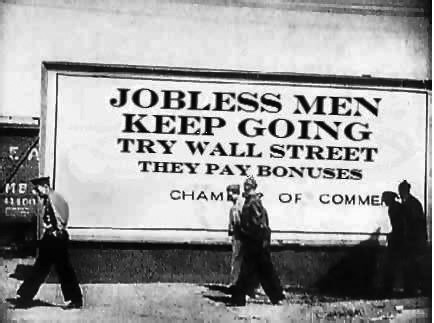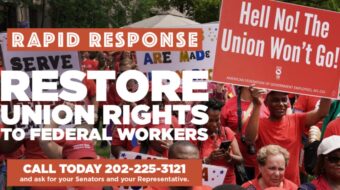
Below is a section of the keynote to the Communist Party USA 30th National Convention, June 13-15, 2014, delivered on the convention’s opening day by outgoing National Chair Sam Webb. The newly elected national chair is John Bachtell, who previously served as Illinois organizer for the party.
This article discusses the second of six challenges for the party and progressive movement. (See previous articles here and here.) We will feature other keynote sections in the coming weeks.
– Editors
Challenge 2: An economy that works for working people
The 99 percent aren’t faring too well. Are you?
The economic recovery is anemic; and things don’t look good going forward.
In fact, Paul Krugman, the Nobel Prize winning economist and New York Times columnist, wrote:
“But what if the world we’ve been living in for the past five years is the new normal? What if depression-like conditions are on track to persist, not for another year or two, but for decades?”
In making this claim, Krugman is arguing that contemporary U.S. capitalism, while still governed by the same underlying laws of motion and dynamics and still dominated by powerful corporations, isn’t like its mid-20th-century predecessor. And he’s right.
Let me explain:
Present day capitalism, which began to take shape in the early 1980s, bears little resemblance in important ways to its forerunner in the years stretching from the end of World War II to the mid-1970s. In that era, U.S. capitalism (as well as the other core countries in the capitalist zone) registered remarkable growth. Prosperity was broadly shared. And capital accumulation out of which come corporate profits took place largely in the sphere of material production.
Now and then interruptions in this process occurred, but they were short and followed by a resumption of production, rising living standards, and accumulation on a broader scale.
But this changed in the mid-1970s. Capitalism’s robust and near continuous expansion over a 30-year period gave way to stagflation, that is, high inflation, slow growth, a weakening dollar in international markets, and declining profits in an increasingly integrated world economy, notable for its concentration of economic power and wealth in the hands of a few hundred globally organized corporations and fierce competition/rivalry on a state and corporate level.
Unhappy with this turn of events on a global as well as a domestic level, but fully resolved to overcome the new barriers to capital accumulation, profit maximization, and economic growth in this new economic environment, the moneybags in the corporate suites decided that U.S. capitalism’s “golden age” was over and, accordingly, switched gears:
First, they declared war on labor. And what a war it was and still is. They extracted massive concessions from workers in the unionized mass production industries; they closed factories and slashed payrolls; they downsized, restructured, and rationalized industries and workplaces; and they deployed new technologies to replace and speed up labor.
But this was no more than the opening act of a long-running play. They also loosened a good chunk of their money from its old moorings in the sphere of material production and said to it: “You are free. Go wherever you want. Multiply many times over. Make me rich many times over.”
Which is exactly what their now footloose and profit-seeking money did.
It moved into new lines of production as well as real estate, land speculation, sports teams, art, and luxury living.
It fled to other regions and states where wages were low and labor unprotected.
It also chased after, as Naomi Klein has written, natural disasters, where it profited handsomely off people’s tragedies.
It circumvented as well as broke down trade barriers as well as claimed intellectual property rights on everything from seeds (stolen from farmers and indigenous peoples) to medicines to new technologies.
It also licked its chops for a moment and then got down to the business of privatizing public education, Social Security, health care, public housing, water provision, and public land and resources.
But the main place surplus capital flowed was into financial markets and channels.
In fact, the flow was so massive and sustained that it became the main factor shaping the contours, structure, interrelations, and evolution of the national and world economy.
But, as we know now only too well, this enormous flow of overwhelmingly speculative, parasitic, and non-productive money into the financial sphere, while pumping life into an under-performing economy for longer than most of us expected, was anything but an unmixed blessing.
Sure a few people on Wall Street or connected to Wall Street got rotten rich, lived in unconscionable luxury, and accumulated enormous social power to affect events and outcomes on the national and international level.
But most of us here (as well as elsewhere) got spanked, and spanked hard, especially when the financial feeding frenzy finally unraveled and the whole economic edifice collapsed in 2008. We lost jobs, income, homes, and family farms. Piled up debt so we could get by. Did nothing but worry about the future of our families and communities. And if we were a person of color or a woman, the impact was calamitous. Poverty became even more racialized and feminized.
And to think that not one, not even one, of these thieves of high finance spent a day in jail.
To make matters worse, five years later, things are no better for us. Nearly all of the income gains during this time have gone to the 1 percent. And the prognosis for the economy is more of the same – slow growth, stagnation, and mounting contradictions.
What gives added force to the stagnation pressures are the vast changes that have occurred in the global economy since 1980.
On the one hand, at the apex of the economy are huge multinational corporations and banks.
And, on the other hand, Marx’s reserve army of the unemployed, underemployed and informally employed has doubled in size since the 1980s.
The scale of this absorption of workers into wage exploitation has radically re-leveraged the relative positions of capital and labor in favor of the capitalist class.
What is more, this disparity in wealth and power at the core of the economy constitutes a new and powerful source of downward pressure on the U.S. and world economy.
Now this whole turn of events and reconstitution of U.S. and global capitalism could not have happened without a major assist from the capitalist state (governmental bodies, courts, instruments of violence and repression) and the political class.
Of crucial importance were the election of Ronald Reagan in 1980 and the ascendancy of the right that followed. This political grouping was the hammer in this transformative process.
But to be fair, the Democrats, and especially the Clinton administration, were not bystanders either. They also had a hand in transforming the economy to the advantage of the 1 percent and Wall Street.
So the question before us is: How do we get out of this mess?
Here’s my two cents:
What’s needed is nothing less than the restructuring of the economy in a consistently and deeply anti-corporate, and eventually socialist direction.
First: The conversion of a fossil fuel driven and militarized economy into a peaceful, sustainable one, based on and developing renewable energy sources.
Second: Major infrastructure construction and renewal.
Third: A guaranteed and livable income for all, and a reduction in the workweek with no cut in pay.
Fourth: Major expansion of every aspect of the public sector – education, housing, recreation, culture, childcare, retirement security, health care, elder care, and so forth.
Fifth: Strengthening of workers’ rights and people’s rights generally.
Sixth: Turn “too big to fail” banks and the energy industry into public utilities.
Seventh: Measures to overcome longstanding inequalities and rebuild hard-hit communities.
Finally: Controls on capital’s ability to abandon communities and move around the world.
Of course such reforms will be met with the refrain: there is no money!
But that is perhaps the biggest of the Big Lies.
In the past few decades, trillions of dollars of unearned wealth has been amassed by the 1 percent – this should be transferred into public hands.
Another huge source of funds is the reordering of governmental priorities away from military spending.
Finally, taxing of financial flows and transactions should get our radical economic program off and running.
And let me add this: The purpose of such a reform program isn’t to “level the playing field” or to insure that everyone who “plays by the rules” and works hard, gets a shot at the “American Dream.”
To the contrary, the purpose is to decisively change the rules and tilt the playing field in favor of the underpaid, the underemployed and the unemployed, the struggling family, the discriminated against, the woman who combines wage labor at unequal pay with the lion’s share of unpaid household labor (not least of which is child and elder care), the indebted student, the underwater homeowner, the bankrupt city, the underfunded school, every victim of capitalism’s crisis and its irrational priorities.
But where do we begin? My answer is that we begin where we are, that is, with the existing movements and struggles.
And there are so many! Starting with the growing movements against economic inequality, the low-wage economy, and right-wing extremism.
One day it is AFL-CIO President Richard Trumka passionately speaking against the growth of inequality.
The next day it is President Obama making a speech on the same subject.
The books of Thomas Piketty and Elizabeth Warren, both on the subject of glaring and unjustified inequality, are on the New York Times best sellers list.
A progressive bloc in Congress stands firm behind economic, gender and racial justice.
The minimum wage movement is really kicking up sand, the latest victory the vote by the Seattle City Council to lift the minimum wage to $15 per hour.
Meanwhile, around the world, powerful movements, and in some cases, even governments, especially in Latin America, are demanding economic justice.
And before we move on, as a former altar boy, I got to bring the Pope into the conversation, who said, and I have to quote him:
“While the earnings of the minority are growing exponentially, so, too, is the gap separating the majority from the prosperity enjoyed by those happy few. The imbalance is the result of ideologies, which defend the absolute autonomy of the marketplace and financial speculation. … A new tyranny is thus born, invisible and often virtual, which relentlessly imposes its own laws and rules. … The thirst for power and possessions knows no limits. In this system, which tends to devour everything that stands in the way of increased profits, whatever is fragile, like the environment, is defenseless before the interests of a deified market, which become the only rule.”
Powerful stuff! Like Lebron James, the Pope’s got game!
One of the most compelling struggles against economic inequality, maybe the most compelling, is the low–wage worker organizing campaign.
Who are these workers? Well they are us. They are young as well as old, black and brown as well as white, women and men, immigrant as well as native born, suburban and rural as well as urban, and, I’m sure, gay and straight. They also come from red states as well as blue states.
In their corner are important sections of the U.S. labor movement, including the top leadership of the AFL-CIO.
We (and many, many others) are supporters of this struggle. But at this convention we should agree to up the ante.
I say, let’s decide here, right now, at this 30th convention of the Communist Party to make this struggle a strategic focus.
Can we agree to that?
Such a focus, in case anybody is worried, isn’t a turning away from the traditional sections of the working class. It’s not a back benching of our industrial concentration policy, which by the way was never intended to create a pecking order within the working class; to the contrary, its purpose was to activate, empower, and unite the working class as a whole.
Thus, a focus on Walmart, fast food, and other low-wage workers is an adaptation of our concept of industrial concentration to new realities and challenges. This doesn’t mean that people in Michigan should forget the autoworkers, or in California the longshore workers or in … you get the gist.
Now I’m also sure someone is thinking that low-wage workers don’t have the same strategic power that, say the autoworkers in Flint had in the winter of 1935.
I would counter with three observations. First, strategic power doesn’t turn only on location in the capitalist economy. That strikes me as too economistic. It also is about relationships, outreach, alliances, creative forms of struggle, unity, and, not least deepening class and democratic consciousness.
Second, the victories of low-wage workers will bring new spirit, ideas, power capacity and confidence to labor – traditional and non-traditional.
And, third, the organization of low-wage workers will augment manifold labor’s ability to organize the millions of workers who are unemployed and underemployed.
Can labor ignore this reality? NO.
Can we? Same answer!
Can we make a full-blooded turn toward the struggles of low-wage workers?
Great! Sounds like everybody is on board.
Ok!
Photo: Mike Licht, NotionsCapital.com (based on a WPA photo by John E. Allen), CC 2.0 generic)










